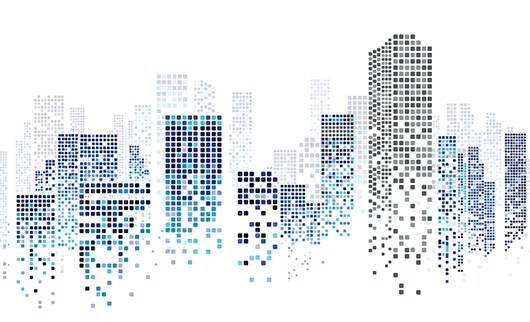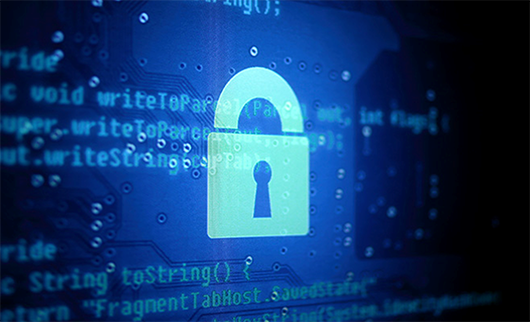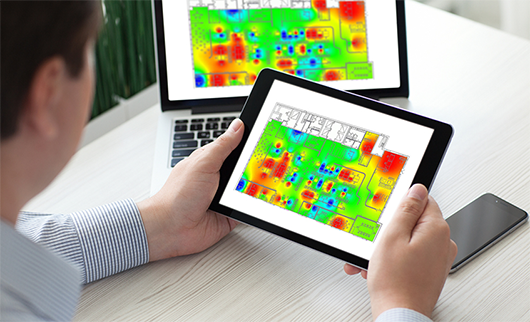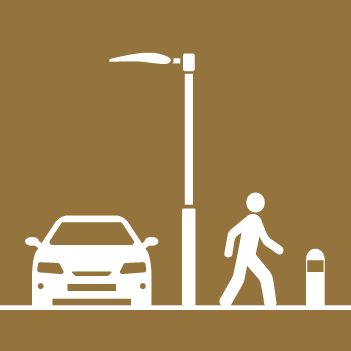

The need for a connected network with substantial cabling requirements has been eradicated.
Not only do wireless systems facilitate greater flexibility in the present, they also open up more opportunities in the future. Manage facility energy consumption, create holistic estate-wide lighting networks, and schedule automatic emergency lighting tests to give you peace of mind.

The requirements of lighting have changed over the years. Where a lighting design used to focus heavily on energy efficiency, luminaire lifespan and getting a solid return on investment, smarter systems bring more advanced benefits.
The latest wireless systems offer the epitome of control, data management and interrogation, security and advanced emergency lighting, the core requirements of modern lighting solutions.
Managing the energy consumption of a building or facility has never been easier than with Vision Smart. Integrated sensors ensure that every luminaire provides accurate, real time luminaire-usage reports. Facility managers can gather then gather data on how their buildings are used by occupants, and can make informed decisions about their energy.
Detailed management of energy consumption within a facility helps to achieve even the most strenuous net-zero targets. The latest smart lighting networks make it easier than ever to keep energy usage to a minimum.


BS5266 stipulates that those responsible for a building must ensure that their emergency lighting is tested every month, and a 3-hours test conducted at least once a year. Even with basic wired DALI networks, this can cause problems, as automatic tests (involving the switch off and on of the mains power) are scheduled at random, which can cause disruption. Vision Smart allows facility managers to schedule automatic tests when it is least disruptive.
The UK Green Building Council states that 75% of the buildings that will be occupied in 2050 have already been built. This means that implementing smart lighting must begin with our existing buildings.
In a Vision Smart network, every luminaire is smart. With Integrated wireless nodes, fittings can communicate with one another, be set into groups, and work as one holistic system. With no additional wiring required, the system can be scaled up from a single room, to a building, to an entire estate. The essence of Vision Smart is in its flexibility.


A major concern with smart systems is their susceptibility to hack or interference.
Smart systems that operate at a frequency outside of Wi-Fi or Bluetooth are significantly less susceptible to disruption, making them a more secure and stable network. Safety and security are core considerations with Vision Smart, ensuring your data is protected.
Heat mapping software provides tangible data to help manage facilities, tracking and monitoring how areas in a building are being used. This data can be used to set lighting levels and sensor settings accordingly in order to reduce energy.
Similarly, luminaire status can be monitored, indicating the condition of various key components, so that potentially damaged fittings can be identified and repaired before they fail.

Heat mapping software provides tangible data to help manage facilities, tracking and monitoring how areas in a building are being used. This data can be used to set lighting levels and sensor settings accordingly in order to reduce energy.
The below image illustrates the Vision Smart heat mapping software at separate intervals within an education environment:
At 10:00am, most people are in the classrooms, so the majority of energy is being used in these areas.
At 12:30pm, it is lunchtime, so the heat maps indicate a lot of foot traffic in the canteen and corridors.
At the end of the school day, 4:45pm, there are only staff left at the school, so the lights are only required in the offices and select classrooms.

Education
Education

Retail & Leisure
Retail & Leisure

industrial and Warehousing
industrial and Warehousing

Urban
Urban

Office
Office

Residential
Residential

Warehouse & Logistics
Warehouse & Logistics

Emergency
Emergency